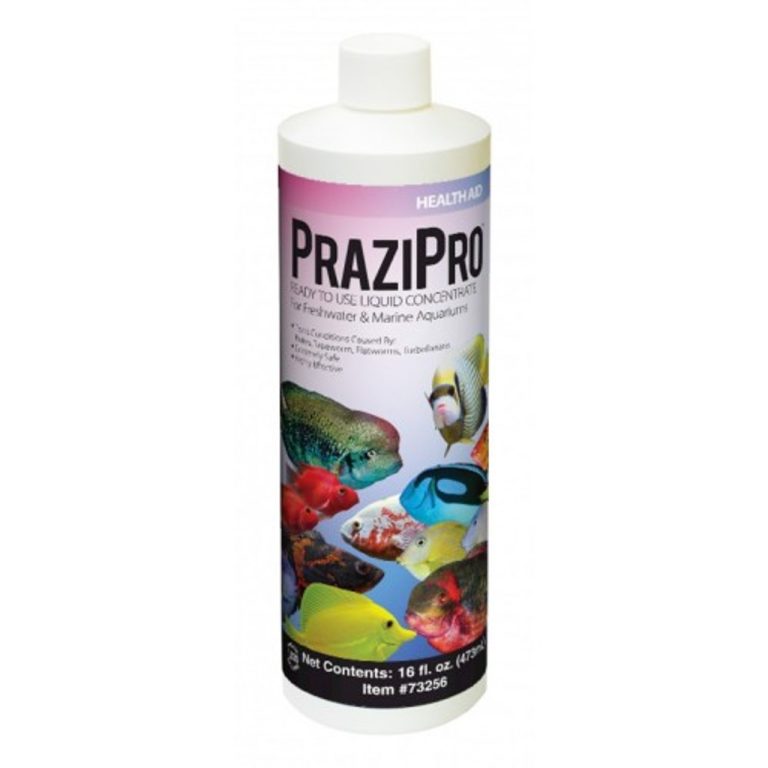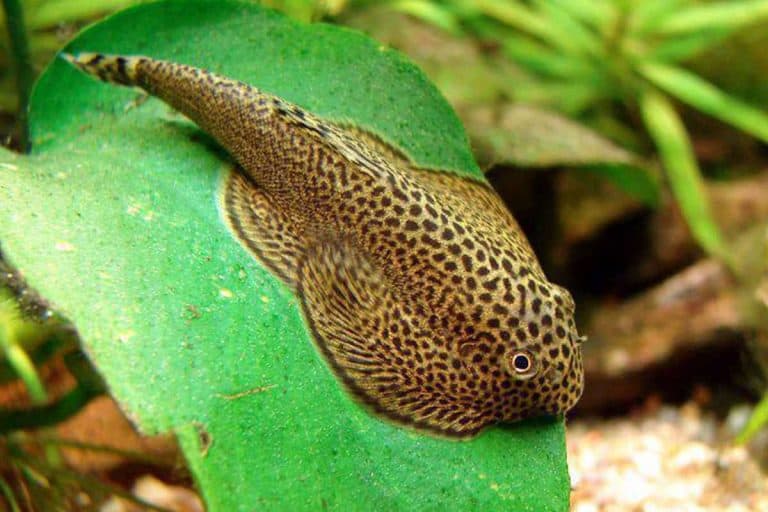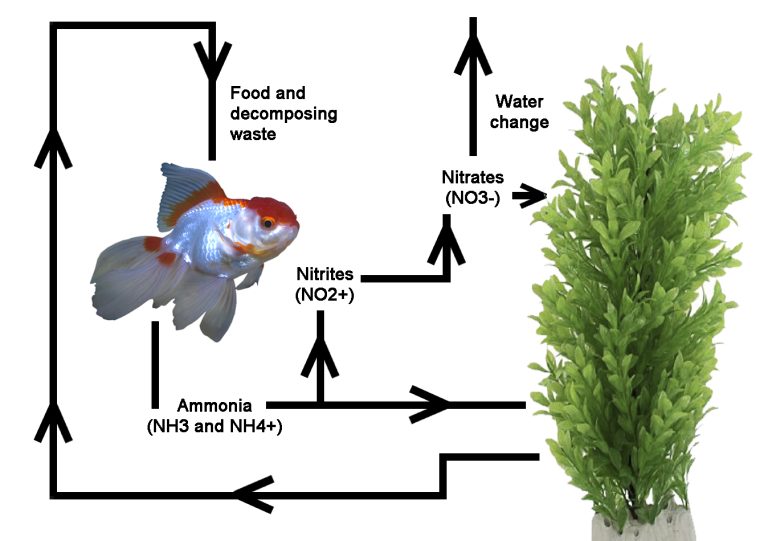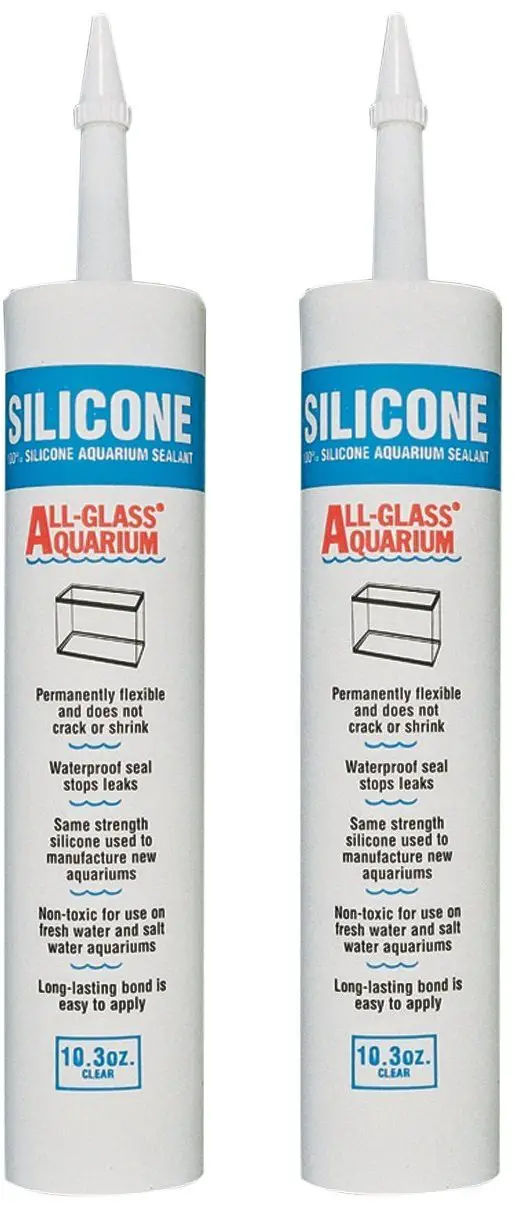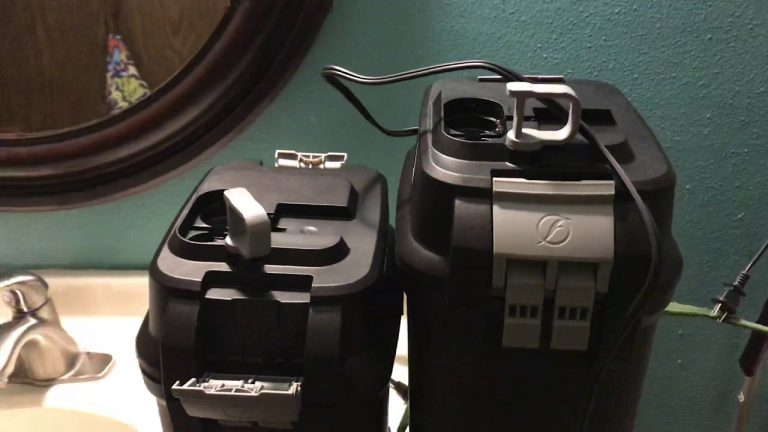Can You Have Too Many Copepods? Discover the Magic of Balance
Yes, having too many copepods can be detrimental to an aquarium’s ecosystem. The excess population can lead to competition for resources and possible imbalance in the food chain, causing negative impacts on other organisms.
In an aquarium, copepods are considered essential for maintaining a healthy and balanced ecosystem. They are small crustaceans that serve as a vital food source for many aquarium inhabitants, such as fish, corals, and anemones. However, it is possible to have an excessive copepod population, which can result from overfeeding or introducing copepods without proper consideration.
When copepod numbers become too high, they can outcompete other organisms for resources, leading to resource depletion and potential starvation for other species. Moreover, an uncontrolled copepod population can disrupt the delicate balance of the aquarium’s food chain, causing negative effects on the overall ecosystem. Therefore, it is essential to maintain a sustainable copepod population to ensure a healthy and prosperous aquarium environment.

Credit: ccaqua.com
Understanding The Role Of Copepods In Aquatic Ecosystems
Aquatic ecosystems are incredibly diverse and delicate environments, and maintaining a balanced ecosystem is vital for the survival of all living organisms within them. One group of organisms that plays a crucial role in this balance is copepods. These tiny crustaceans may be small in size, but their impact on the ecosystem is immense.
Understanding the role of copepods in aquatic ecosystems is key to appreciating their importance and the effects their overpopulation can have on the delicate balance.
Importance Of Copepods In Maintaining Ecological Balance:
- Copepods act as primary consumers in aquatic food chains, feeding on phytoplankton, bacteria, and other organic matter.
- They are an essential food source for many larger organisms, such as fish and whales, and serve as a link between primary producers and higher-level consumers.
- Copepods contribute to the biodiversity of aquatic ecosystems, and their presence is an indicator of a healthy and thriving ecosystem.
- Their grazing activities regulate the abundance of phytoplankton populations, preventing algal blooms and maintaining water clarity.
- The removal of copepods from the ecosystem can lead to imbalances in the food chain, affecting the entire ecosystem’s health and stability.
Role Of Copepods As Primary Consumers:
- Copepods play a vital role as primary consumers by converting energy from phytoplankton into biomass that can be utilized by higher-level consumers.
- They are an important food source for larval fish, juvenile fish, and various marine invertebrates.
- Copepods’ feeding habits help control the size of phytoplankton populations, preventing them from becoming too dominant and causing harmful algal blooms.
- Their abundance and diversity as primary consumers contribute to overall ecosystem productivity.
Significance Of Copepods In Nutrient Cycling:
- Copepods play a crucial role in nutrient cycling within aquatic ecosystems.
- They efficiently recycle nutrients by consuming organic matter, such as dead algae and detritus, and excreting waste back into the water column.
- Their excretions release nitrogen and phosphorus, which are essential nutrients for the growth of phytoplankton and other primary producers.
- Copepods help maintain nutrient levels in the water, ensuring a continuous supply of nutrients for various organisms within the ecosystem.
- Nutrient cycling facilitated by copepods promotes overall ecosystem productivity and supports the growth and survival of various species.
Copepods are indeed incredible organisms that contribute immensely to the functioning and stability of aquatic ecosystems. Understanding their role as primary consumers and their significance in nutrient cycling highlights the importance of maintaining a balanced copepod population. Monitoring and preserving the health of copepod populations is crucial to ensuring the overall well-being of aquatic ecosystems and the diverse array of species that rely on them.
The Benefits Of An Optimal Copepod Population
Can You Have Too Many Copepods?
Copepods are tiny crustaceans that play a vital role in aquatic ecosystems. They are often introduced to aquariums and fish tanks to help maintain a healthy balance. However, there is an ongoing debate as to whether it’s possible to have too many copepods.
While an abundance of copepods may seem beneficial at first glance, it’s important to consider the potential consequences. We will explore the benefits of maintaining an optimal copepod population, focusing on how they enhance water clarity, control harmful algal blooms, and support other aquatic species through nutrition.
Enhancing Water Clarity Through Copepod Grazing
- Copepods are voracious grazers, feeding on small particles suspended in the water column.
- As they consume algae and other organic matter, they help clarify the water, reducing turbidity and promoting greater visibility.
- By controlling the abundance of microscopic organisms, copepods prevent the overgrowth of algae and maintain a healthy balance in the ecosystem.
- This not only benefits the aesthetics of aquariums but also enhances the overall health and well-being of the inhabitants.
Controlling Harmful Algal Blooms With Copepod Predation
- Harmful algal blooms, or habs, can have detrimental effects on aquatic environments, including fish kills and oxygen depletion.
- Copepods, with their feeding behavior, can effectively control the growth of harmful algae, preventing the formation of large blooms.
- By consuming the algae responsible for habs, copepods play a crucial role in maintaining the ecological balance of the ecosystem.
- This natural form of biological control is not only environmentally friendly but also reduces the need for chemical interventions.
Supporting Fish And Other Aquatic Species Through Copepod Nutrition
- Copepods are highly nutritious and serve as a vital food source for many fish and other aquatic organisms.
- The small size and high lipid content of copepods make them an ideal prey item for a wide range of species.
- By introducing copepods into aquariums or fish tanks, owners can provide a natural and nutritionally rich diet for their aquatic pets.
- This can contribute to the overall health, growth, and coloration of the fish, enhancing their well-being and longevity.
Maintaining an optimal copepod population in aquatic environments offers numerous benefits. From enhancing water clarity through their grazing behavior to controlling harmful algal blooms and providing essential nutrition, copepods play a crucial role in maintaining a balanced and thriving ecosystem.
So, while it’s important to monitor copepod populations to avoid overgrowth, harnessing their benefits can have a positive impact on aquatic ecosystems as a whole.
The Implications Of Excessive Copepod Abundance
Copepods are tiny crustaceans that play a crucial role in marine ecosystems. These small organisms serve as a vital food source for many larger marine animals, including fish, whales, and seabirds. They also help to maintain water quality by consuming algae and other organic matter.
However, can there be too much of a good thing when it comes to copepods? In this section, we will explore the implications of excessive copepod abundance.
Negative Impact On Water Quality Due To Excessive Copepod Waste:
- Excessive populations of copepods can result in a significant increase in waste production.
- This excess waste can lead to the buildup of organic matter, causing a decrease in water quality.
- Elevated levels of copepod waste can result in oxygen depletion and the release of harmful substances, such as ammonia, into the water.
Competition Among Copepods For Limited Resources:
- As the copepod population increases, so does the competition for limited resources, such as food and space.
- Resource scarcity can lead to higher mortality rates, as copepods struggle to obtain the necessary nutrients for survival.
Potential Disruption Of The Entire Food Chain Due To Overpredation By Copepods:
- When copepod populations become too abundant, they may engage in excessive predation.
- Overpredation can upset the balance of the food chain, leading to the depletion of prey species.
- Without a sufficient prey base, predator species may face food scarcity and potential population decline.
While copepods are important contributors to marine ecosystems, excessive copepod abundance can have negative implications. From negatively impacting water quality to disrupting the delicate balance of the food chain, maintaining a healthy copepod population is crucial for the overall health and stability of marine environments.
Strategies For Maintaining The Optimal Copepod Balance
Can You Have Too Many Copepods?
Maintaining The Optimal Copepod Balance
Copepods are essential members of aquatic ecosystems, playing a crucial role in the food chain as both consumers and prey. But can you have too many copepods in a system? Understanding how to maintain the optimal balance of copepod populations is key to ensuring the health and stability of marine environments.
In this section, we will explore strategies for achieving this equilibrium through various factors and approaches.
Balancing Copepod Population Through Environmental Factors:
- Temperature: Copepods have specific temperature preferences, and their population growth can be influenced by variations in water temperature. Understanding and maintaining the appropriate temperature range for copepods in their habitat can help regulate their population.
- Salinity: Like temperature, copepods are sensitive to changes in salinity levels. Maintaining the optimal salinity range can help prevent copepods from multiplying excessively or declining.
- Oxygen levels: Dissolved oxygen is vital for copepod survival. Low oxygen levels can harm copepod populations, while excessive oxygenation may also disrupt their natural distribution. Ensuring the appropriate oxygen levels will help maintain an optimal copepod balance.
Natural Predators As A Means Of Copepod Regulation:
- Fish: Many fish species, such as anchovies, herring, and juvenile salmon, feed on copepods. Introducing or maintaining a healthy population of these natural copepod predators can help control copepod numbers without relying on artificial means.
- Shrimp and krill: These crustaceans also consume copepods, providing another natural means of regulating their population. Encouraging the presence of shrimp and krill in ecosystems can help control copepod abundance.
Managing Copepod Abundance Through Ecosystem-Based Approaches:
- Biodiversity conservation: Conserving the overall biodiversity of an ecosystem is vital for maintaining a balanced copepod population. A diverse range of species, including plankton, algae, and other microorganisms, provide copepods with essential food sources. Protecting and restoring the natural habitats and food web interactions within an ecosystem can indirectly regulate copepod populations.
- Managing commercial exploitation: In some cases, overexploitation of copepods for commercial purposes, such as for aquaculture feed, can lead to imbalances in their populations. Implementing sustainable practices and regulations regarding copepod harvesting can help ensure their numbers remain at optimal levels.
Maintaining the optimal copepod balance requires a comprehensive understanding of the factors affecting their population dynamics. By considering environmental factors, natural predation, and ecosystem-based approaches, we can strive for a healthy and sustainable copepod population. This delicate balance contributes to the overall health and stability of marine ecosystems.
The Role Of Research And Monitoring In Copepod Management
Copepods are tiny crustaceans that play a crucial role in the marine ecosystem, serving as a vital source of food for larger marine organisms. While copepods are essential for maintaining the balance and health of aquatic environments, can there be such a thing as too many copepods?
Let’s explore this question further by examining the importance of research and monitoring in copepod management.
Importance Of Continuous Monitoring And Data Collection
Continuous monitoring and data collection are essential in understanding copepod population dynamics and assessing their abundance in different marine environments. By regularly collecting data on copepod populations, researchers can gain valuable insights into their distribution, behavior, and interactions with other organisms.
This information is vital for effective copepod management and conservation efforts.
- Monitoring copepod populations helps identify any significant changes or fluctuations in their abundance, enabling scientists to detect population bottlenecks or excessive population growth.
- Continuous data collection provides valuable information for researchers to assess the impact of environmental factors, such as temperature, salinity, and nutrient availability, on copepod populations.
- Monitoring also helps scientists track the impact of human activities, such as pollution and overfishing, on copepod abundance, allowing for informed management decisions.
Research Initiatives For Understanding Copepod Population Dynamics
To better understand copepod population dynamics, researchers are conducting various studies and research initiatives. These initiatives aim to delve deeper into the factors influencing copepod abundance and distribution, as well as their ecological role within marine ecosystems.
- Researchers are investigating the impact of climate change on copepod populations, as rising sea temperatures and changing ocean currents can disrupt their reproductive cycles, leading to population declines.
- Studies are being conducted to explore the interactions between copepods and other marine organisms, such as fish larvae and zooplankton, to better understand their ecological importance and food web dynamics.
- Research initiatives are focused on developing new monitoring methods, such as remote sensing and dna metabarcoding, to enhance the accuracy and efficiency of copepod population assessments.
Implementing Sustainable Management Practices For Copepod Conservation
To ensure the long-term conservation of copepod populations, it is crucial to implement sustainable management practices. These practices aim to strike a balance between the needs of human activities and the protection of vital marine ecosystems.
- Implementing size and catch limits for commercial copepod harvesting can help prevent overfishing and ensure sustainable population levels.
- Establishing protected areas or marine reserves can help conserve copepod populations, allowing for undisturbed breeding and feeding grounds.
- Promoting responsible nutrient management and reducing pollution can help maintain favorable conditions for copepod populations, as excessive nutrient inputs and pollutants can disrupt their reproductive success.
Continuous monitoring, research initiatives, and sustainable management practices are vital for copepod conservation and population management. By understanding copepod population dynamics and implementing effective management strategies, we can ensure the ecological balance and health of our marine ecosystems.
Frequently Asked Questions Of Can You Have Too Many Copepods
Can Copepods Multiply Quickly In An Aquarium?
Yes, copepods have a rapid reproduction rate, allowing their population to multiply significantly in an aquarium over time.
Is It Harmful To Have An Excessive Amount Of Copepods?
Having too many copepods can lead to imbalances in the aquarium’s ecosystem, causing nutrient depletion and stress for other inhabitants.
How Do Copepods Benefit The Aquarium Environment?
Copepods play a crucial role in maintaining a healthy aquarium ecosystem by consuming detritus and algae, promoting water quality and reducing waste.
What Are The Signs That Copepod Population Is Overwhelming?
Signs of an excessive copepod population in the aquarium may include cloudier water, increased waste production, and poor health among other organisms.
Conclusion
Maintaining a balanced copepod population in your aquarium is crucial for the overall health and stability of the ecosystem. While copepods play a vital role in controlling algae and detritus, having an excessive population can lead to competition for resources, overcrowding, and potential negative effects on other organisms.
It is important to monitor the copepod population regularly and take appropriate actions to prevent any imbalance or overabundance. Removing excess copepods or providing additional food sources can help maintain a healthy population. Additionally, introducing natural predators, such as certain fish or invertebrates, can help control copepod numbers if necessary.
Ultimately, finding the right copepod population for your specific aquarium setup is essential for creating a harmonious and thriving environment. So remember, while copepods are beneficial, moderation is key to ensure a balanced aquatic ecosystem.

